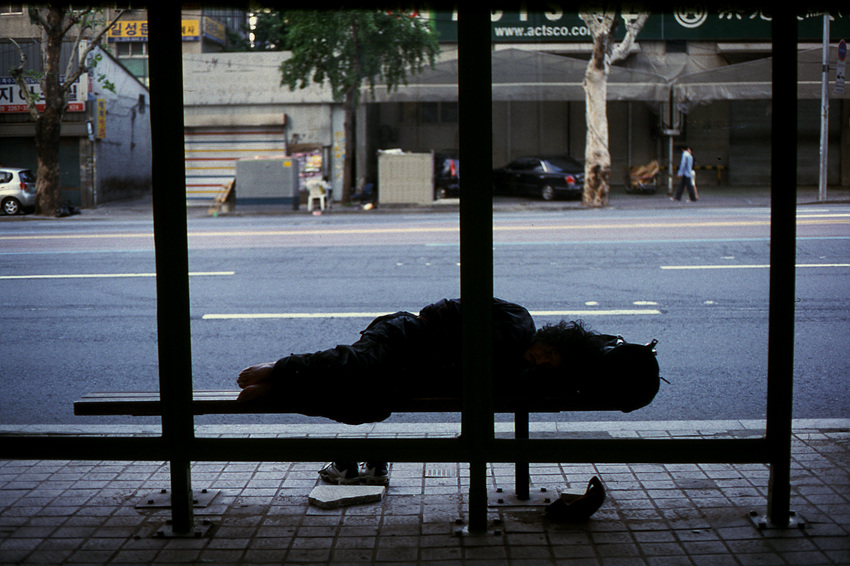The Impossible (And Necessary) Task of Counting Homeless Youths

Photo by Lavin Han via Creative Commons
OPINION
Not long ago, Robin P. McHaelen, founder and executive director of True Colors, Inc., launched into a training for police officers from around the state.
Three minutes in to the class, a man stood up, said, “This is bullshit. I’m not listening to this,” and stormed out.
He was soon followed by another police officer – a reaction that, said McHaelen, isn’t common among most of the law enforcement officials she trains.
Sadly, the impact of those officers’ reactions goes beyond a training room. McHaelen works with LGBT youth – lesbian, gay, bisexual, transgender, and other sexual and gender minority youth. One study says 40 percent of youths who are homeless identify as LBGT. A police officer may be a homeless youth’s only hope to get connected to necessary help and services. So if a police officer isn’t engaged, a young person who is homeless won’t be, either.
But in just a few weeks, activists and volunteers in Connecticut will try to do just that – find and engage every young person between the ages of 13 and 24 who is homeless or unstably housed.
It won’t be easy. This is a notoriously difficult population to reach, said Steve Hurley, youth count coordinator at Hartford-based Journey Home. Young people who are homeless are skilled at hiding from any system that would seek to count them. Homeless students know how to sidestep being detected, even in school, and even in school with attentive teachers.
Last year’s Connecticut youth count found 4,396 sheltered, unsheltered, and unstably housed youth. That number most assuredly has changed, and without an accurate count, there can’t be effective policy. The state has committed to ending homelessness among young people by 2020 by creating a system that will quickly get young people who fall into homelessness housed, and back on track.
The weeklong youth count, scheduled for Jan. 24-30, is a hybrid, said Mary Ann Haley, deputy director of Connecticut Coalition to End Homelessness, of federal Department of Housing and Urban Development-required questions, and questions aimed at the unique needs of kids who are sleeping rough. Organizers are building on the success of previous counts, and pulling out all the stops, including enlisting public colleges and universities to create a system where one person on campus is responsible for addressing the needs of homeless or unstably housed students. The system is called SPOC, or single points of contact, and has received wide support on Connecticut campuses, Haley said.
(Any one who has spent any time teaching has a story about a student who slept in his or her car while taking classes.)
The youth count will be conducted along with the state’s annual, federally-mandated Point In Time – PIT – count of the rest of the state’s homeless population, set for Jan. 23. Similar counts will be taking place around New England around the same time. Counts in Vermont and Massachusetts, for example, will be conducted on Jan. 31.
Youth homelessness census-takers are also contacting what are known as hot spots, or businesses where youths hang out such as Dunkin Donuts and movie theaters, to get permission to conduct counts there, as well.
Last November, a University of Chicago report on youth homelessness said that during any given year, one in 10 American young adults age 18 to 25 experiences homelessness, and one in 30 of children ages 13 to 17 experiences homelessness. That’s 3.5 million young adults, and 700,000 children and adolescents.
As it is with adults, youths are homeless for a variety of reasons. Some get kicked out of their family homes. Some run away. Youths who are parents, or members of the LGBTQ community, or youths of color, or who lack a high school degree are at a higher risk of experiencing homelessness.
Young people who are homeless are also more vulnerable to risky behaviors — such as sex work or robbery – to survive, which makes awareness among law enforcement even more critical. And people who are homeless are homeless as children are more likely to be homeless as adults.
For a teenager who is homeless, risky behaviors “are all survival skills,” said McHaelen. “None of them is a good idea, but if you’re trying to live,” crime may be an attractive option. “So how could police be helpful when they’re arresting or dealing with a youngest who is doing these kinds of behaviors? What’s underneath?”
Last year’s federal Department of Housing and Urban Development’s annual homelessness report to Congress, released in December, said that most (88 percent) young people who are homeless were between the ages of 18 and 24, and were more likely than other people to be unsheltered – or sleeping rough. (Shelters are notoriously bad places for young people. Youths who are homeless have unique developmental needs that aren’t addressed in a shelter.)
The report also said that more than a third of the young people who were counted as homeless are women or girls.
Youth living on the edge like that need a tightly-woven safety net. And they need to be counted.
In Connecticut, McHaelen is part of a regional youth engagement team initiative, or YETI, which focuses on youth and housing services around the state. McHaelen’s group is based in Hartford, which has the largest number of youths who are homeless in the state, she said.
Is 2020 unrealistic? Haley says no.
“I think it’s going to be a very complex problem to solve because of the number of different entity involved, and I’m a believe that anything is possible with the right resources and partners, and commitment, and data to track it,” said Haley. “We are very hopeful.”
